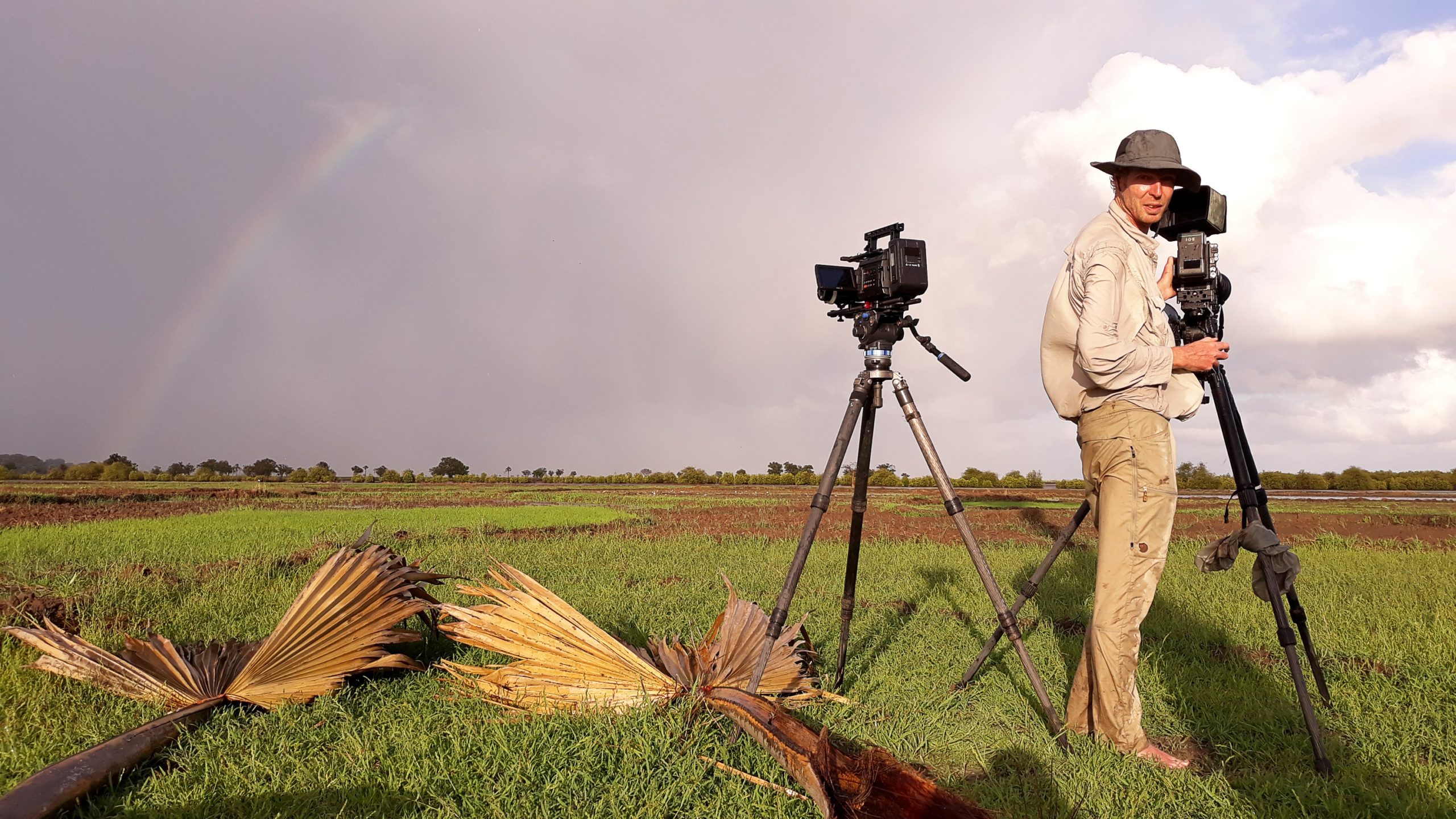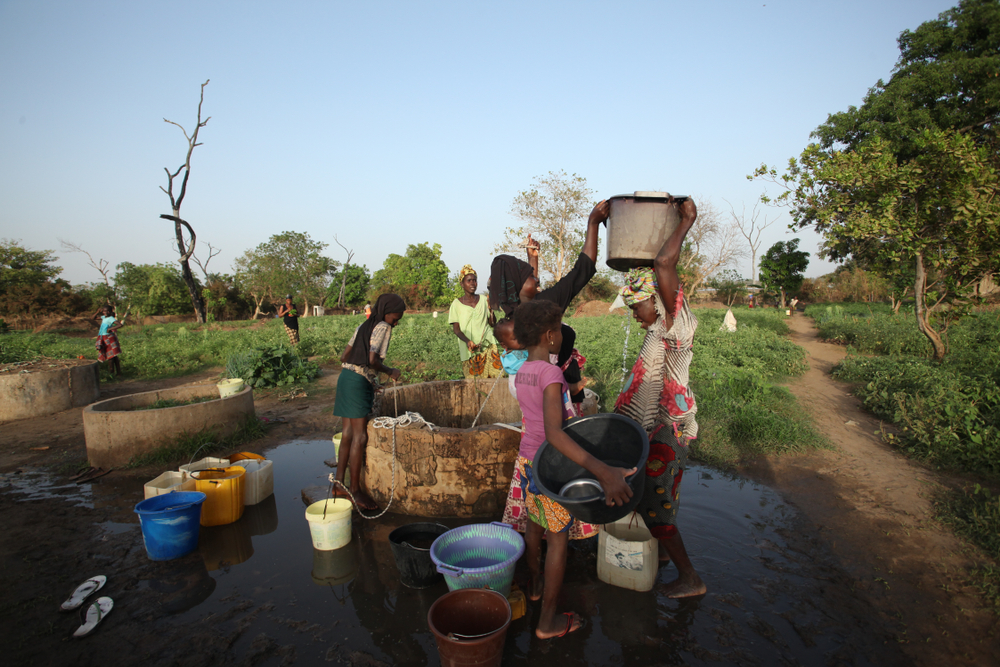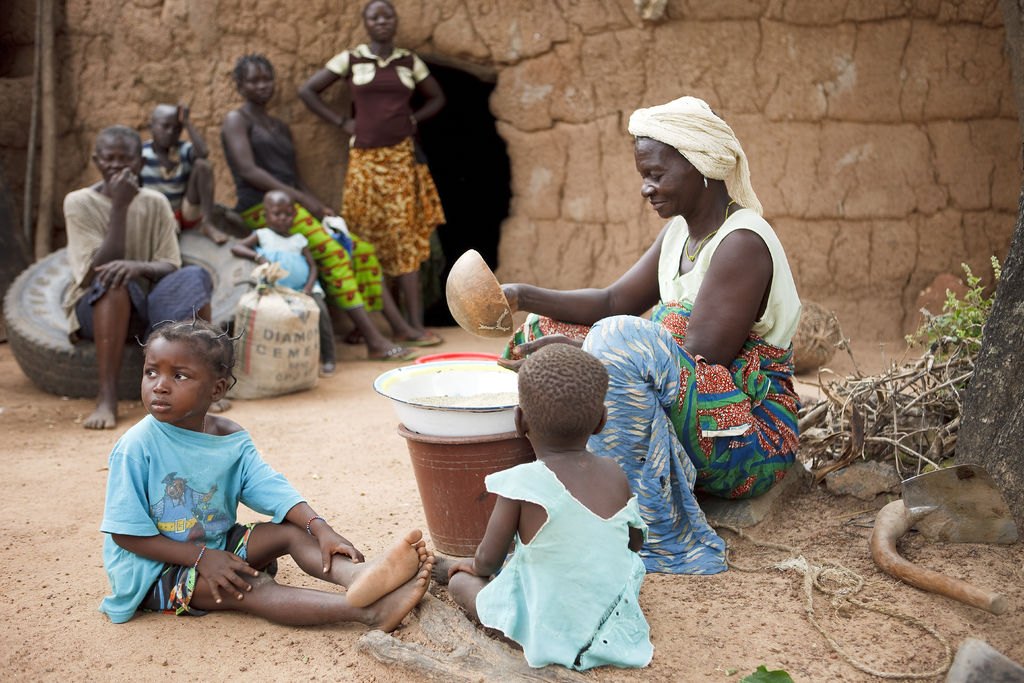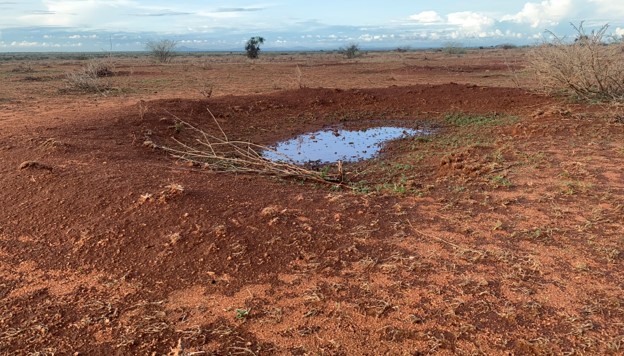Cameraman and ecologist Melchert Meijer zu Schlochtern followed the Dutch national bird closely, from Senegal to Iceland, for his new film Grutto!
His work is done. The footage has been shot, the editing is finished. Now there is hard work going on to get the sound right. But that is a separate department. So cameraman Melchert Meijer zu Schlochtern has time in his office in Plus Ultra, where his production company is located, to look back on the filming of Grutto! The film is the latest nature documentary by Ruben Smit Productions. Smit is a WUR alumnus who is involved in the film together with researchers from Wageningen, such as professor and black-tailed godwit expert David Kleijn.
Grutto! fulfils a long-cherished wish to ‘do something about field birds’, Meijer zu Schlochtern begins. ‘Our meadow birds have not been thriving for decades. Their populations are declining by five per cent every year. That is fast. The black-tailed godwit is an iconic and important species for our country. Most of the world’s population breeds here. Grutto! tells the story of an opportunist that has adapted to human agricultural systems over the centuries.’
Field bird by default
Let’s start by shattering a few myths: the black-tailed godwit is not a meadow bird at all. At least, not historically. The primeval black-tailed godwit is a marsh-dwelling bird. ‘We filmed the black-tailed godwit in Estonia, where it still breeds in raised bogs and marshes. In the Netherlands, we have dug out such bogs and replaced them with meadows.
Everywhere it goes, the black-tailed godwit faces problems caused by humans
As a result, the godwit has become a meadow bird in our country. It has moved on, because it is an opportunist. In the mid-20th century, this process led to a population boom among black-tailed godwits. Until the agriculture here became too intensive. Exactly the same thing happened in the parts of Africa where the birds overwintered. There, the black-tailed godwit lived on the mudflats of the Casamance, a river in southern Senegal. Now it forages in the rice fields at the edge of the mangrove forests.’
Not so Dutch
Another myth: the Dutch national bird is really an African bird. The black-tailed godwit spends most of the year in Africa. Grutto! is the story of the bird’s travels. Meijer zu Schlochtern: ‘We start the story in Senegal. En route to the Netherlands we visit Spain, Portugal and the north of France. Along the way, we tell the story of the primeval black-tailed godwit in Estonia and at the end there is a detour to take in the Icelandic black-tailed godwit.’
Unlike in previous Ruben Smit films (De Wildernis, Wad), humans play a major role in Grutto! ‘Everywhere it goes, the black-tailed godwit faces problems caused by humans and is dependent on farmers. That is the story we tell, without passing judgment or taking a stand. The farmer has to make choices too, and is caught between nature management and business management. He has to mow his fields at some point. The first mowing in spring yields very high-protein grass. The rice farmers in Senegal would be glad to see the back of the black-tailed godwits, because they eat all their sowing seed. They hate the bird. When we arrived there and told them we were going to film black-tailed godwits, they asked, “Why don’t you keep them in the Netherlands?” They thought we had released the birds there! They try to chase them away over there, but it doesn’t work. They said they even wanted to poison the birds. If that happens, it will be the end of the black-tailed godwit. But I can understand it. In a resilient system, a rice farmer can cope with birds eating his seeds. But with climate change, the rains are irregular, harvests are dwindling and the soil is becoming salinized. It is bizarre, really: such a rich and green area and yet so fragile. We record all of that cinematically.’
Iceland
The Icelandic black-tailed godwit’s story is extraordinary. At the end of the winter, on their return journey from Senegal, ‘our’ black-tailed godwit and the Icelandic one meet in Portugal. ‘The Icelandic bird is a subspecies that is slightly redder. It winters in Portugal. Nearly the entire European population, some 70,000 black-tailed godwits, can be found in a few rice fields near Lisbon in early February.’ But no matter how bad things get for the black-tailed godwit in the Netherlands, the population down there remains stable. How is that possible?
The black-tailed godwit is an opportunist: it can adapt extremely well
The answer, says Meijer zu Schlochtern, is that the Icelandic black-tailed godwit is doing extremely well because of climate change. ‘The growing season is longer, the population is increasing, there is a greater demand for milk and so more land is being farmed. The black-tailed godwit, which used to breed only in south-west Iceland, is now found all over the country. So exactly the same thing is happening there as here in the past. Peat bogs are being reclaimed and the black-tailed godwit seizes the opportunity that throws up.’
There is ‘some hope’ to be gleaned from this Iceland story, says Meijer zu Schlochtern. ‘But it is sad as well. Nature is being sacrificed at the expense of the golden plover, the snipe and the red-necked phalarope. And in the end, if farming becomes too intensive, it will also be at the expense of the black-tailed godwit.’ But he is still positive about the bird’s chances. ‘I think we will save the black-tailed godwit eventually. It is very good at adapting. It is not a helpless bird that won’t survive. Several initiatives by farmers and conservationists are working very well. But they do cost a lot of energy and money.’
The film Grutto! will be shown in Pathé cinemas from 7 July.

 Cameraman and ecologist Melchert Meijer zu Schlochtern during the shooting of the film Grutto! Own Photo
Cameraman and ecologist Melchert Meijer zu Schlochtern during the shooting of the film Grutto! Own Photo 

